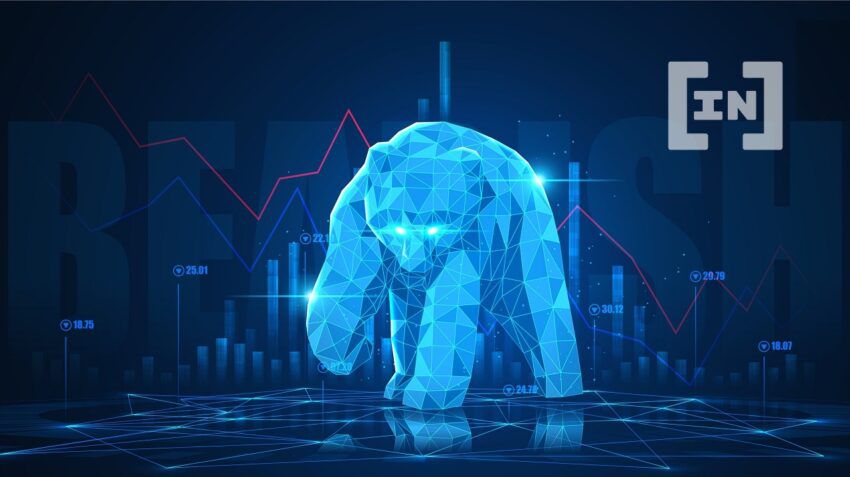Bear market: There has already been quite a “rinsing out” of the market of operators with unsound fundamentals. Here’s how the remaining protocols will survive, according to Diane Dai, co-founder of DODO.
When bear markets strike, the going gets rough. But, as calamitous as they can be, bear markets often lead to major innovations, regardless of the industry they occur in. The bear market currently raging in DeFi is no exception.If history is to repeat itself, a wave of innovation is coming. So the question is this: which projects will ring in DeFi’s next innovation era – and which will not?
Starting with the second part of that question, the proof seems to be in the pudding. The projects that drove the hype cycle preceding the current bear market did not bring any major innovations to DeFi’s technological layer. Instead, they focused on creating cash flow with over-leveraged tokenomics. It can therefore be argued that the projects currently suffering the most from the bear market are responsible for the dire state of innovation in DeFi.
Bear Market Blues
Today’s bear market – like all bear markets – has come to separate the wheat from the chaff. As we’ve seen with Terra, projects without a strong technical foundation will be the first to go.
To determine which platforms will last – and what the future of DeFi will look like – we need to note which projects focus less on novel tokenomics and get back to innovating at the technological layer. We need better DeFi infrastructure and creators who are going to build it.
DeFi 1.0: The Liquidity Boom
The last major wave of deep, technical innovation in DeFi occurred in 2020.
The introduction of the peer-to-pool liquidity model introduced a mechanism for piling up liquidity on Ethereum. This replaced the expensive and inefficient counterparty matching mechanisms that were previously the norm on DEXs. This led to the creation of Uniswap’s AMM, as well as Compound and AAVE’s lending pool design.
However, this peer-to-pool model relies heavily on large amounts of liquidity to perform. As a result, DeFi builders drew inspiration from product models that leveraged token economics to serve the product. This included FCoin Exchange’s trading miningmechanism. The centralized exchange introduced this in 2019 to reward users with tokens for each transaction they made. They also drew from Hummingbot’s liquidity mining, a piece of open-source market-making software that allowed DeFi users to earn tokens in exchange for providing liquidity.
Throughout 2020, Compound gained huge popularity by taking advantage of liquidity mining, making decentralized lending a vital part of the DeFi landscape. Later, SushiSwap launched Pool 2 Mining which combined tokenomics with liquidity structures by adding leverage to them. Together, these innovations made it possible to bootstrap liquidity for trading protocols across the board – expanding DeFi as a whole.
While these innovations were significant to the development of DeFi, this era of DeFi expansion was not without its growing pains. Because all of these protocols – and many others – ran on Ethereum, the blockchain became congested. This ultimately slowed the pace of innovation and led to sluggish market conditions.
DeFi 2.0: Explosive Tokenomics
The recovery from the bear market near the end of 2020 gave way to a wave of new protocols in 2021. Rather than introducing innovation on DeFi’s technical layer, these new applications focused on creating new kinds of highly-leveraged tokenomic systems that would build wealth for participants.
To accomplish this, these protocols integrated existing tech stacks with new kinds of smart contracts. They used algorithms to create positive feedback loops that led to higher and higher returns for liquidity providers and yield farmers. For a while, everything worked very well – people were making eye-poppingly high APYs for lending and farming their assets. While the market was good, the returns were high.
However, chaos ensued when market conditions worsened, and people started to sell their tokens. The algorithmically-driven virtuous cycles that provided such high returns stopped functioning. Stablecoins lost their pegs, and cascading liquidations erupted across the market. The over-leveraged tokenomics that supported such high yields in favorable conditions could not work in a market that was not performing well.

DeFi 3.0: What Now?
When we look back to DeFi’s most recent market cycle, it’s clear that it was caused by a combination of accumulated leverage and human greed and arrogance. The whole market suffers from significant leverage liquidation at the end of each manic phase – and today’s bear market isn’t over yet. There’s no sign that it will be over anytime soon.
When we consider the protocols and applications that were broken by the initial crash, it’s clear that there has already been quite a “rinsing out” of the market. And undoubtedly, more projects will continue closing shop as bearish conditions linger. But what is going to last? Which projects will weather this storm, and ultimately pave the way for the next wave of innovation? It’s all about infrastructure.
Over-leveraged tokenomics failed us. However, projects built on trustless, decentralized technology are still going strong:lending protocols, DEXs, liquidity platforms, and other tools with solid architecture have weathered the storm. Market conditions do not affect whether or not these applications can perform. They are designed to operate when token valuations are high and when they are low – the bear market does not determine whether or not they can function. That’s why the future of DeFi lies in trustless design.
Bear Market – Trustless Technology
After the events of the last several months, there’s no doubt that the public will become more aware of the types of protocols that are built to last. The enduring performance of truly trustless technology will continue to prove its value for everyone in this industry – and beyond.
About the Author

Diane Dai is the co-founder of DODO. She is a prolific innovator and thought leader in decentralized finance.
Disclaimer
All the information contained on our website is published in good faith and for general information purposes only. Any action the reader takes upon the information found on our website is strictly at their own risk.


